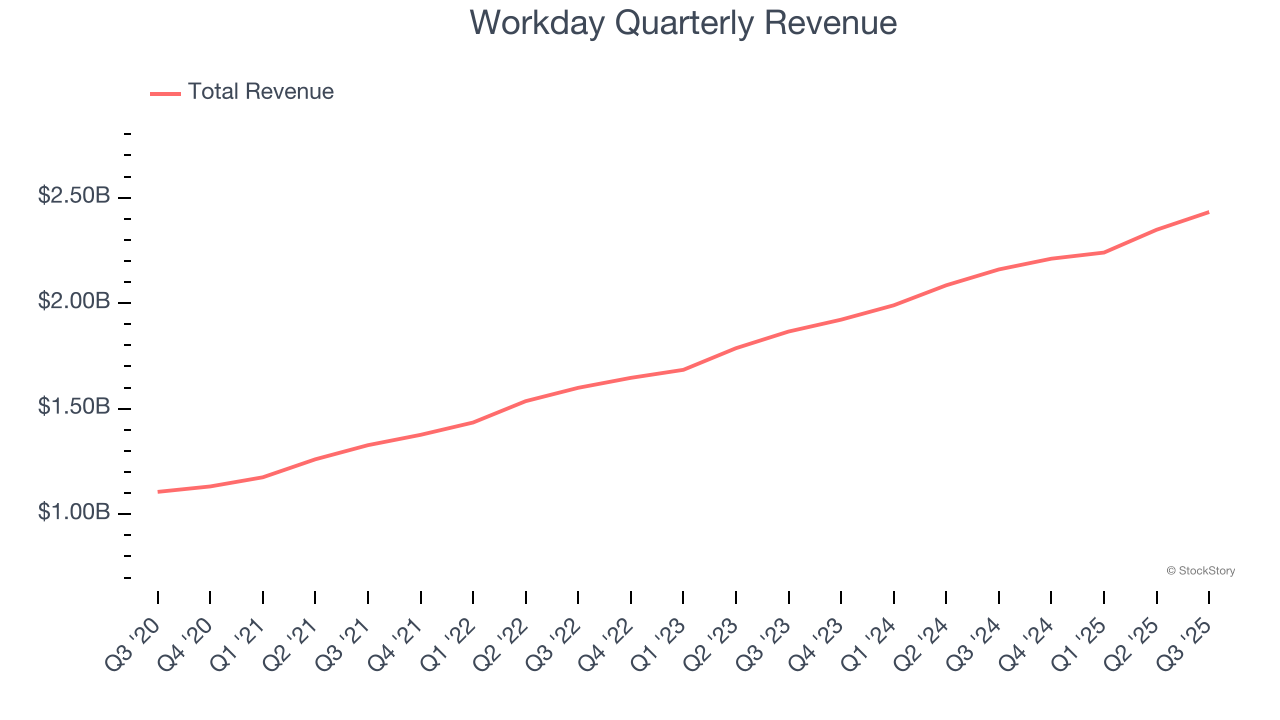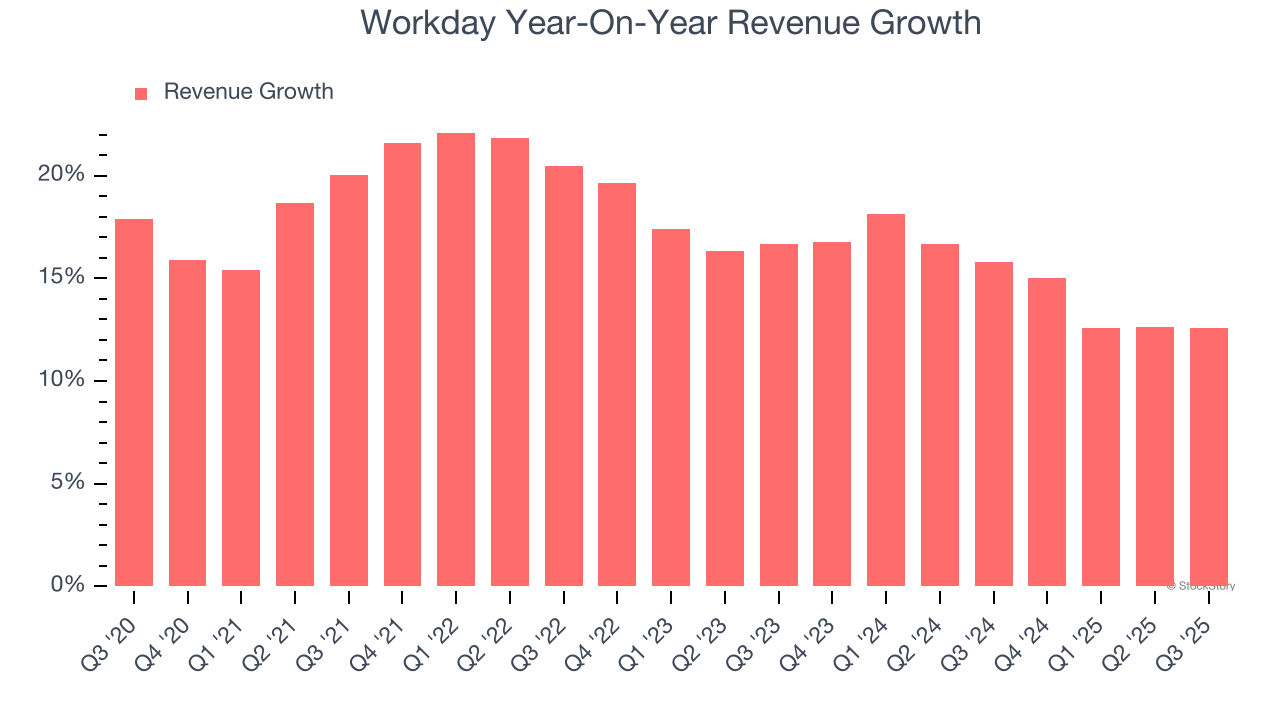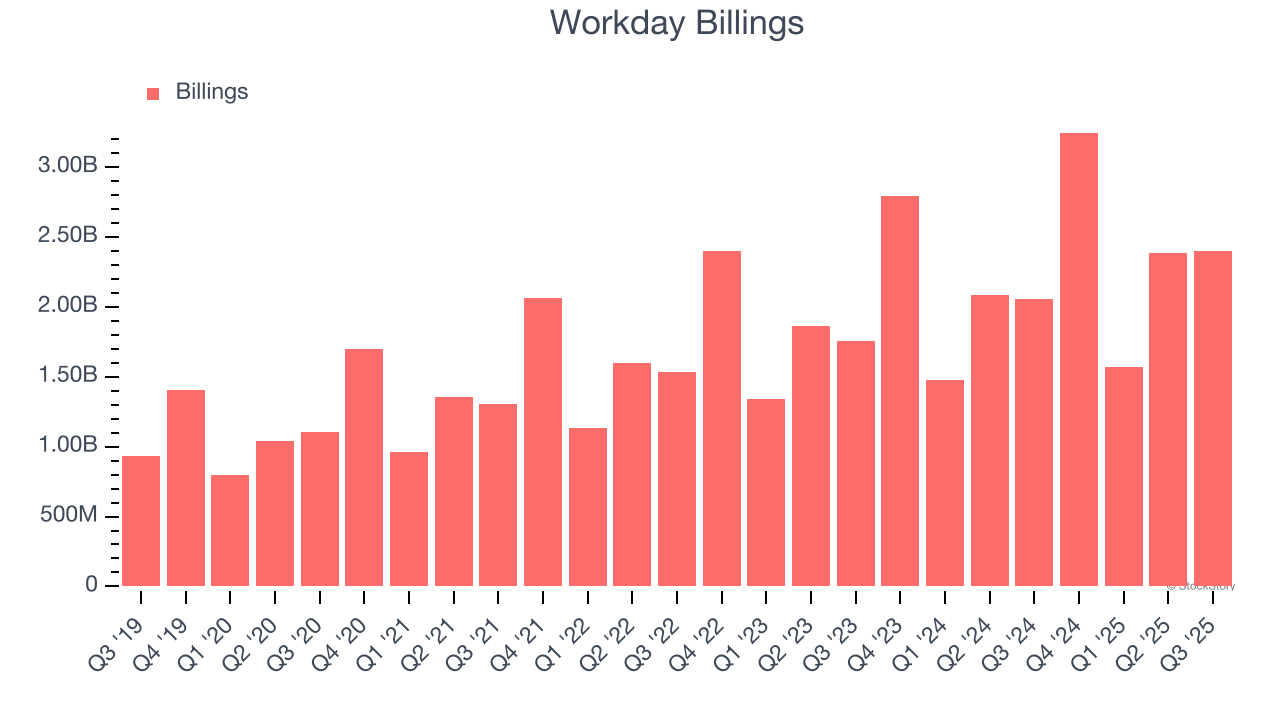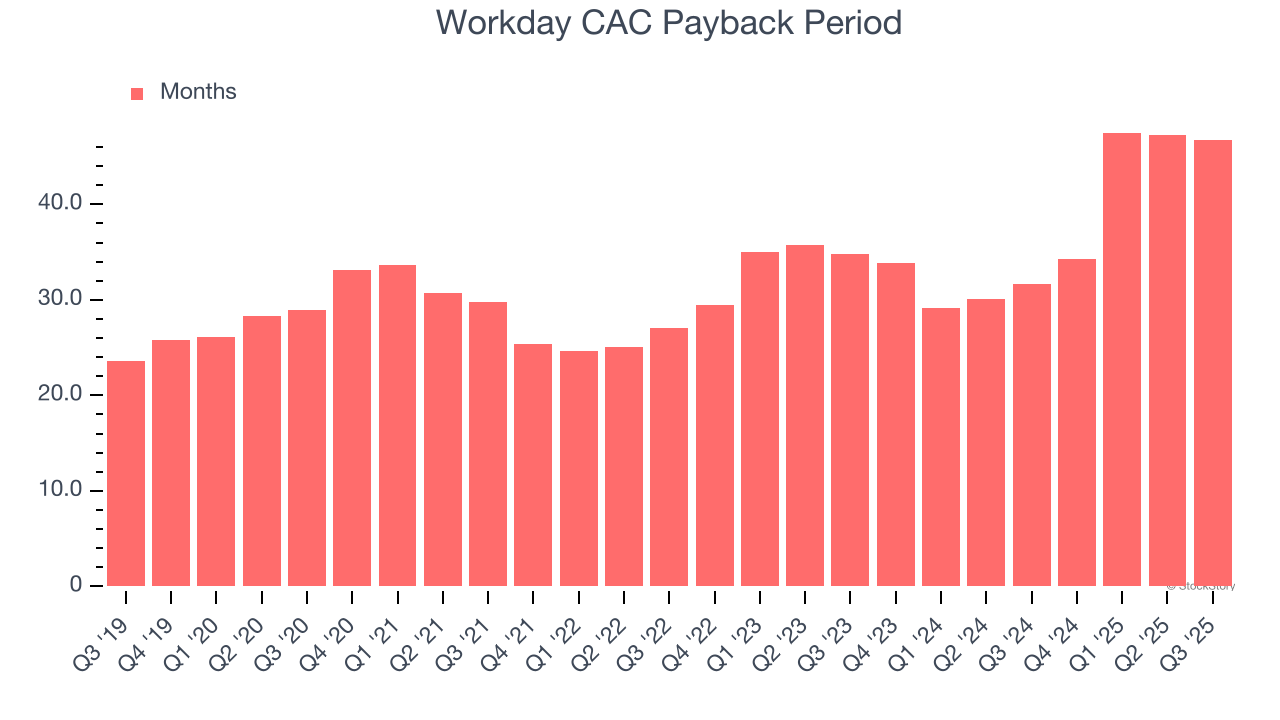
Enterprise software company Workday (NASDAQ: WDAY) reported Q3 CY2025 results exceeding the market’s revenue expectations, with sales up 12.6% year on year to $2.43 billion. Its non-GAAP profit of $2.32 per share was 6.7% above analysts’ consensus estimates.
Is now the time to buy Workday? Find out by accessing our full research report, it’s free for active Edge members.
Workday (WDAY) Q3 CY2025 Highlights:
- Revenue: $2.43 billion vs analyst estimates of $2.42 billion (12.6% year-on-year growth, 0.7% beat)
- Adjusted EPS: $2.32 vs analyst estimates of $2.17 (6.7% beat)
- Adjusted Operating Income: $692 million vs analyst estimates of $679.2 million (28.5% margin, 1.9% beat)
- Operating Margin: 10.6%, up from 7.6% in the same quarter last year
- Free Cash Flow Margin: 22.6%, down from 25% in the previous quarter
- Billings: $2.40 billion at quarter end, up 16.6% year on year
- Market Capitalization: $60.51 billion
"Workday delivered another solid quarter, fueled by the strength and diversity of our business and the momentum we're seeing across our AI portfolio," said Carl Eschenbach, CEO, Workday.
Company Overview
Born from the vision of PeopleSoft founders after Oracle's hostile takeover of their previous company, Workday (NASDAQ: WDAY) provides cloud-based software for financial management, human resources, planning, and analytics to help organizations manage their business operations.
Revenue Growth
A company’s long-term sales performance can indicate its overall quality. Any business can have short-term success, but a top-tier one grows for years. Over the last five years, Workday grew its sales at a 17.3% compounded annual growth rate. Although this growth is acceptable on an absolute basis, it fell slightly short of our standards for the software sector, which enjoys a number of secular tailwinds.

Long-term growth is the most important, but within software, a half-decade historical view may miss new innovations or demand cycles. Workday’s recent performance shows its demand has slowed as its annualized revenue growth of 15% over the last two years was below its five-year trend. 
This quarter, Workday reported year-on-year revenue growth of 12.6%, and its $2.43 billion of revenue exceeded Wall Street’s estimates by 0.7%.
Looking ahead, sell-side analysts expect revenue to grow 12.6% over the next 12 months, a slight deceleration versus the last two years. This projection doesn't excite us and suggests its products and services will face some demand challenges.
Software is eating the world and there is virtually no industry left that has been untouched by it. That drives increasing demand for tools helping software developers do their jobs, whether it be monitoring critical cloud infrastructure, integrating audio and video functionality, or ensuring smooth content streaming. Click here to access a free report on our 3 favorite stocks to play this generational megatrend.
Billings
Billings is a non-GAAP metric that is often called “cash revenue” because it shows how much money the company has collected from customers in a certain period. This is different from revenue, which must be recognized in pieces over the length of a contract.
Workday’s billings came in at $2.40 billion in Q3, and over the last four quarters, its growth slightly lagged the sector as it averaged 13.5% year-on-year increases. This performance mirrored its total sales and suggests that increasing competition is causing challenges in acquiring/retaining customers. 
Customer Acquisition Efficiency
The customer acquisition cost (CAC) payback period measures the months a company needs to recoup the money spent on acquiring a new customer. This metric helps assess how quickly a business can break even on its sales and marketing investments.
Workday does a decent job acquiring new customers, and its CAC payback period checked in at 46.7 months this quarter. The company’s relatively fast recovery of its customer acquisition costs gives it the option to accelerate growth by increasing its sales and marketing investments. 
Key Takeaways from Workday’s Q3 Results
It was encouraging to see Workday beat analysts’ billings expectations this quarter. Overall, this print had some key positives. The stock traded up 1.3% to $236.43 immediately following the results.
Workday had an encouraging quarter, but one earnings result doesn’t necessarily make the stock a buy. Let’s see if this is a good investment. What happened in the latest quarter matters, but not as much as longer-term business quality and valuation, when deciding whether to invest in this stock. We cover that in our actionable full research report which you can read here, it’s free for active Edge members.







